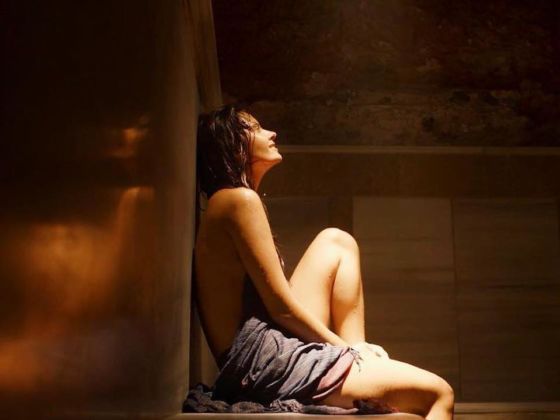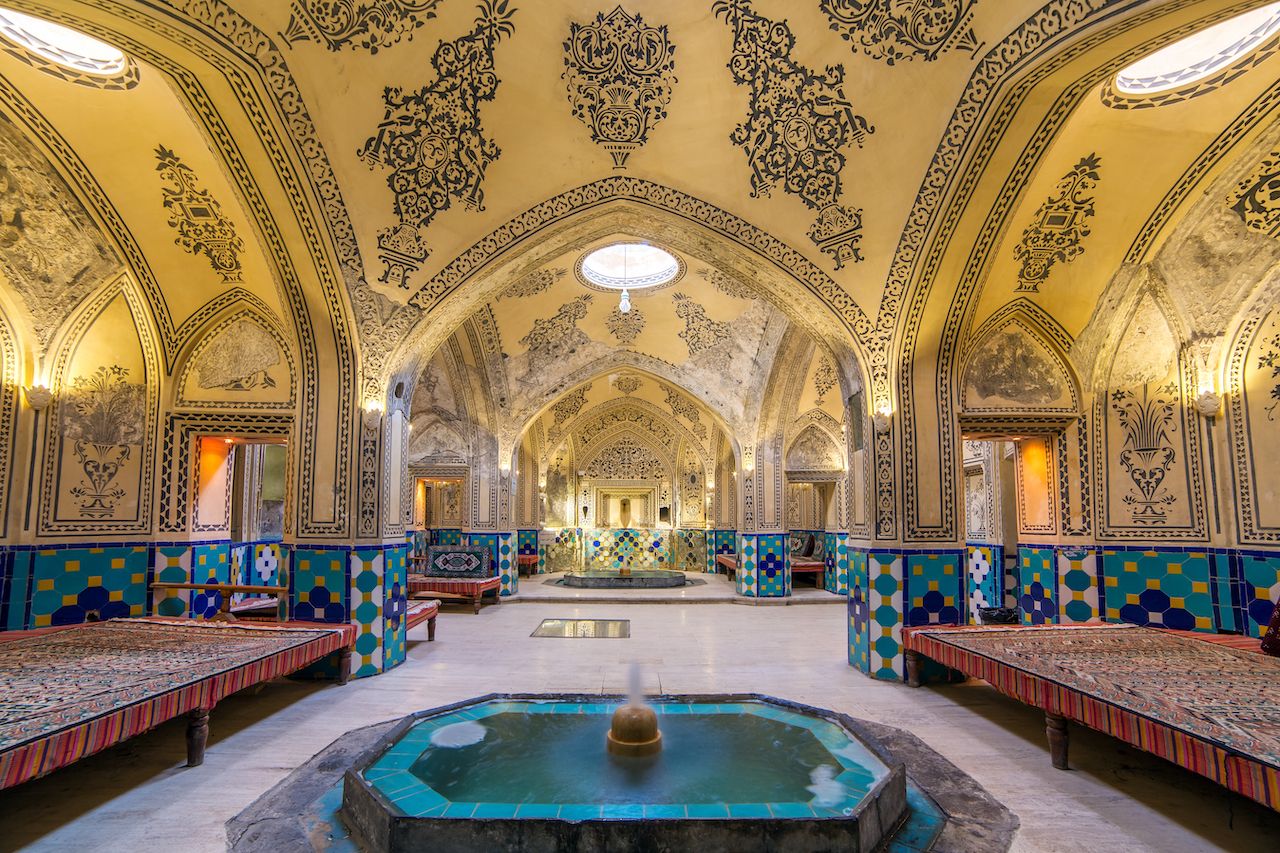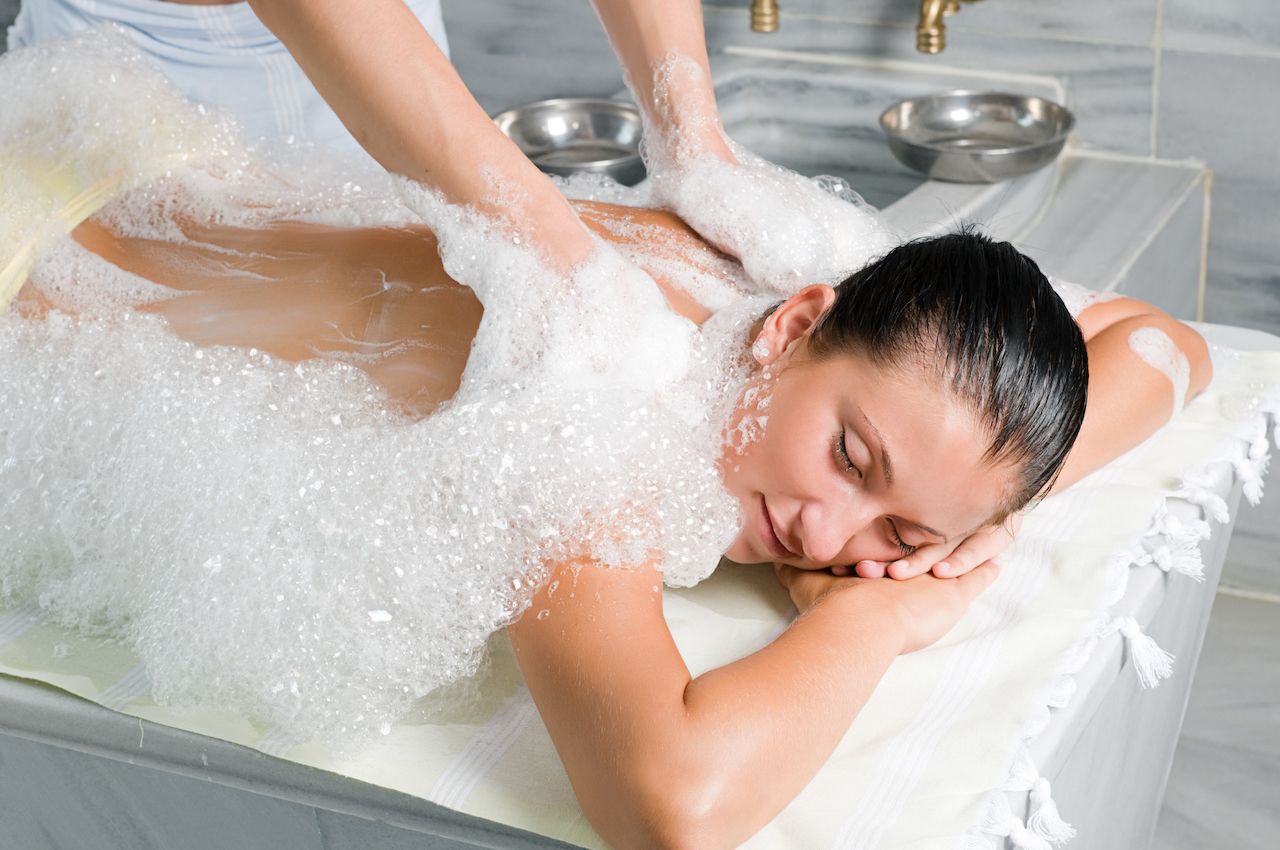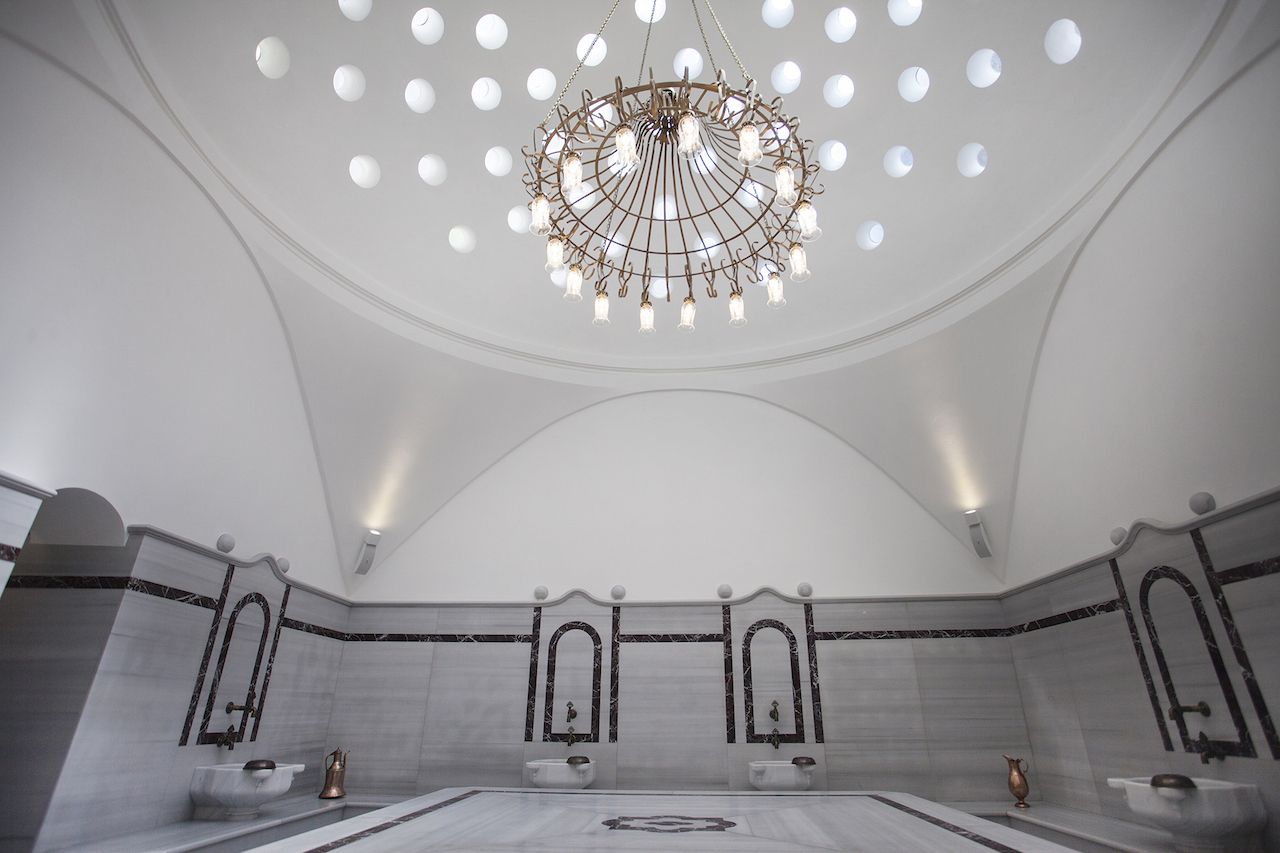You’ve likely heard travelers from all over laud their Turkish bath experience, and you’ve probably added it to your bucket list without even fully understanding what exactly a Turkish bath even is. First things first: Turkish baths aren’t only found in Turkey. They span the Middle East and Asia, from Morocco to Syria to India, and have even cropped up in Western countries, specifically England. From knowing how much to tip to knowing exactly what state of undress you should expect to be in, here’s everything you need to know about experiencing your first Turkish bath and why you should give it a try.


Everything You Need to Know Before Your First Turkish Bath Experience
What are the origins of the Turkish bath?

Photo: Mazur Travel/Shutterstock
The first signs of Turkish baths date all the way back to the 14th century, during the Ottoman Empire’s vast reign of much of the Middle East and Europe. Inspired by Roman practices in bathing, Turkish baths were a source for both community gathering and hygiene maintenance. With indoor plumbing not coming into existence for another few hundred years, communal baths were designed to be a focal point in city centers, accessible to everyone. The origins of Turkish baths can also be tied to Islam as a form of cleansing before entering a mosque for prayer. Today, remaining Turkish baths can often be found close to Mosques in the city center.
What to expect at a Turkish bath and what to wear
At most Turkish baths, there will be separate entrances and sections for men and women, so if you’re going with a friend of the opposite sex, expect to meet them out at the other end. Every bath is a little different in terms of the amount of clothing coverage most people wear, but it’s accepted that you keep a bathing suit on if you’re not comfortable donning the thin disposable underwear they often provide. We recommend bringing flip flops, as well, which you can wear throughout the changing rooms and public pool areas. And don’t forget a fresh change of clothes and your own toiletries if you want to do as the Turks do and consider this your bath for the day.
The Turkish bath experience can also vary depending on if you’d like individual treatments or to wash alone. We recommend going all in and paying extra for an attendant to wash and scrub you. You may think you know what exfoliation is, but until you’ve experienced a Turkish bath, you actually have no idea.
You’ll be lathered up with soap (always by an attendant of your same sex); scrubbed down with an exfoliant paste, most often a gommage or savon beldi, which are gentle and painless exfoliants that are most effective when the applier rubs vigorously; and then washed and rinsed again but with cool water. Don’t be alarmed when you see gray-colored “noodles” sloughing off your skin during exfoliation. Those are just the layers of dead skin you probably didn’t know you had before you walked in. A traditional treatment usually includes a massage, as well — these massages are pretty quick with deep pressure, so we recommend those for people who are familiar with massages.
How is a Turkish bath different from Russian baths or Moroccan hammam?
The one main feature of a Turkish bath that is different from a Russian bath or Moroccan hammam is that there will be small rooms of dry heat, rather than saunas. After building up a sweat for 10-15 minutes in the dry heat room, you’ll enter the larger communal pool, usually an ornately built marble room with tall ceilings and skylights for natural lighting, where you can relax alone as long as you wish.
How much should you tip at a Turkish bath?

Photo: Levent Konuk/Shutterstock
It’s recommended to tip your attendant about 15 percent, so make sure to take out some cash in the country’s currency before heading in. Towels, a wash basin, and maybe a robe should all be included in your treatment. After your treatments, feel free to relax in the bath for as long as you please. An entry fee permits you to lounge all day, with some baths staying open until midnight. When we said Turkish baths are a place for community gathering, we meant it!
Why you should go to a Turkish bath
Walking into a traditional Turkish bath feels like a step back in time. It will be easy to envision life during the Renaissance when Arab nations built ornate and intricate mosques and baths that could withstand the elements for hundreds of years. Besides experiencing one of the oldest still-practiced cultural traditions of the East, you’ll want to partake in a Turkish bath because of its health benefits as well.
Because of the hot temperatures, you’ll experience increased circulation and an opening of the pores that will prepare your body for deep cleansing and exfoliation. Heated air and water provide for muscle relaxation, so even if you don’t decide on a massage, you’ll be receiving similar benefits. Dead skin renewal during the exfoliation treatment will leave your skin soft and more elastic. When your skin has been heated up and exfoliated, it’s in an optimal condition to absorb moisture, resulting in an observable “glow.”
And maybe the most important benefit of a Turkish bath is both physical and mental relaxation from your travels. The sudsy massage will relax your muscles and joints and allow for your body to heal from jetlag, long periods of sitting, and the tension that sometimes follow sleeping in an unfamiliar bed.
Best places for a Turkish bath in Turkey
While you can find Turkish baths worldwide, there really isn’t anything like experiencing it Turkey. Before you go, you’ll want to do your research on which Turkish bath fits your price point and desired experience. Some are more tourist-oriented and housed in luxury hotels while the traditional bath structures built hundreds of years ago are more affordable and visited by locals.
Cağaloğlu Hamamı

Photo: Cağaloğlu Hamamı/Facebook
The Cağaloğlu Hamamı was actually the last Turkish bath built by the Ottoman Empire as its reign was declining in the 1700s. It has unique architecture harkening to the Baroque style with a bright white stucco interior. Visitors rave about the kind staff and vigorous scrubs.
If you’re a big planner and want to make sure you’ll be fit in for a scrub and massage as soon as you arrive, visit Cağaloğlu Hamamı because you can book a reservation slot before you go. A little on the pricey side, this bath is pristine. It also offers couples treatments if you want to stick with your partner or friend the whole time.
Address: Alemdar Mh., Cağaloğlu Hamamı Sk. 34, Fatih, Turkey
Ağa Hamam
The Ağa Hamam resides on the corner of one of Istanbul’s most famous streets. You’ll be able to seamlessly slip in after a full day of shopping, eating, and sightseeing. Popular with visitors, the Ağa Hamamı is also Istanbul’s oldest bath, dating back to 1454. They have a separate area upstairs for oil massages as this location tends to get crowded.
Address: Kuloglu mahallesi, Turnacibasi sokak No:48, Istanbul 34433, Turkey
Cukurcuma Hamamı

Photo: ÇUKURCUMA HAMAMI 1831
Recently renovated, the Cukurcuma Hamamı dates back to the 1830s. It is highly recommended that you book your preferred services in advance due to its popularity. There are couples’ services too, so this is a unique hamam that you can experience together with a significant other or friend of the opposite sex.
Address: Firuzaga Mahallesi , Cukurcuma Caddesi No:43 | Beyoglu, Istanbul 34425, Turkey